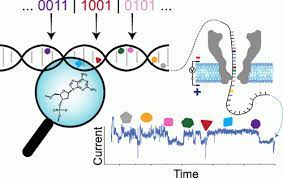
Breaking News
 Candace Owens FACE TO FACE meeting with Erika Kirk Goes Viral
Candace Owens FACE TO FACE meeting with Erika Kirk Goes Viral
 The Global Push for Government Mandated Digital IDs And Why You Should Worry
The Global Push for Government Mandated Digital IDs And Why You Should Worry
 Update on the homestead...Turning dollars into completed projects.
Update on the homestead...Turning dollars into completed projects.
 Tanning beds mutate nearly your entire skin and triple melanoma risk
Tanning beds mutate nearly your entire skin and triple melanoma risk
Top Tech News
 This tiny dev board is packed with features for ambitious makers
This tiny dev board is packed with features for ambitious makers
 Scientists Discover Gel to Regrow Tooth Enamel
Scientists Discover Gel to Regrow Tooth Enamel
 Vitamin C and Dandelion Root Killing Cancer Cells -- as Former CDC Director Calls for COVID-19...
Vitamin C and Dandelion Root Killing Cancer Cells -- as Former CDC Director Calls for COVID-19...
 Galactic Brain: US firm plans space-based data centers, power grid to challenge China
Galactic Brain: US firm plans space-based data centers, power grid to challenge China
 A microbial cleanup for glyphosate just earned a patent. Here's why that matters
A microbial cleanup for glyphosate just earned a patent. Here's why that matters
 Japan Breaks Internet Speed Record with 5 Million Times Faster Data Transfer
Japan Breaks Internet Speed Record with 5 Million Times Faster Data Transfer
 Advanced Propulsion Resources Part 1 of 2
Advanced Propulsion Resources Part 1 of 2
 PulsarFusion a forward-thinking UK aerospace company, is pushing the boundaries of space travel...
PulsarFusion a forward-thinking UK aerospace company, is pushing the boundaries of space travel...
 Dinky little laser box throws big-screen entertainment from inches away
Dinky little laser box throws big-screen entertainment from inches away
 'World's first' sodium-ion flashlight shines bright even at -40 ºF
'World's first' sodium-ion flashlight shines bright even at -40 ºF
Adding new letters to DNA alphabet doubles density of data storage

DNA is naturally made up of combinations of four nucleobases: adenine, guanine, cytosine and thymine. Represented by the letters A, G, C and T, these bases group together in different sequences to form blueprints for every living organism. And this information storage system is incredibly dense, with a single gram of DNA capable of storing up to 215 petabytes (215 million GB) of data.That of course makes it a very attractive potential storage solution for the huge amounts of data modern society produces daily – the entire contents of the internet could fit in a shoebox full of DNA. And as if that storage wasn't dense enough, the researchers on the new study have found a way to double it.



